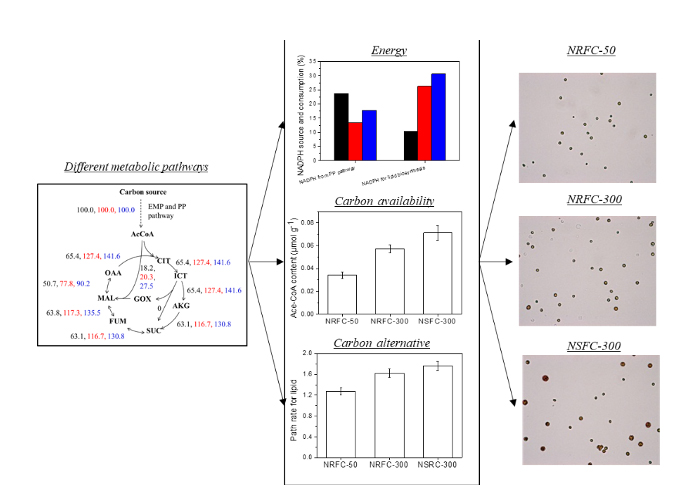Professor Steven Chen’s lab of the Institute for Advanced Study has recently published an interesting research article entitled ‘A novel fed-batch strategy enhances lipid and astaxanthin productivity without compromising biomass of Chromochloris zofingiensis’ in Bioresource Technology (IF=6.669), a top journal in the field of bioresource and biotechnology.
Professor Chen’s lab previously found that carotenoids (especially the high-value astaxanthin) accounted for most of the incomes from the biomass components in several microalgae, which provided a great possibility of improving the economic viability of algal biofuels production. Therefore, first, they needed to find an algal species that could synergistically accumulate astaxanthin and lipids to maximize the overall production benefits, and subsequently designed an economically feasible scheme for the microalgae-derived biodiesel production.
In the study, green microalga Chromochloris zofingiensis was chosen because it could accumulate both lipid and astaxanthin within the algal cell. With the ultimate goal to increase the productivity of lipids and astaxanthin simultaneously, kinetic models, metabolome, transcriptome and metabolic flux which can reflect the changes of cell growth characteristics, carbon partition, central carbon metabolism and product anabolism under different cultivation conditions were established and examined. On this basis, various strategies that may regulate the carbon metabolism of the cells and improve productivity were proposed and experimentally tested. Results suggested that fed-batch strategy proposed could increase lipid and astaxanthin productivity to 457.1 and 2.0 mgL-1d-1, respectively, while the biomass productivity at 1084.3 mg L-1 d-1 was obtained which is comparable with that under normal culture conditions. Moreover, 13C tracer-based metabolic flux analysis (13C-MFA) demonstrated that central carbon metabolism could provide ATP, NADPH and carbon availability for lipid biosynthesis. Finally, combined with the targeted metabolite analysis, 13C-MFA revealed that the fed-batch strategy could improve the content of the precursors for the lipid biosynthesis and elevate the corresponding path rate of C16:0 and C18:0 biosynthesis. The comprehensive understanding of the relationships between carbon availability and carbon conversion from this study could contribute to the improved productivity remarkably by using the fed-batch strategy.

This research was financially supported by the Key Realm R&D Program of Guangdong Province (No. 2018B020206001) and Science and Technology Innovation Commission of Shenzhen (No. KQTD20180412181334790).
Paper link: https://doi.org/10.1016/j.biortech.2020.123306


